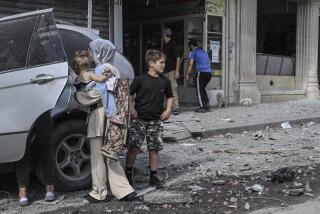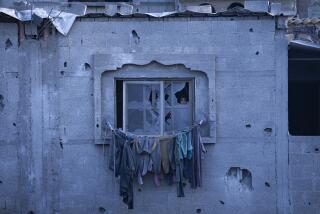A year of war -- and progress
The United States spent 2009 at war again -- with its own troops in Iraq and Afghanistan and as a major, indirect supporter of Pakistan in its internal counterinsurgency and counter-terrorism campaign as well. On balance, I would judge it a moderately successful year in all three places to varying degrees. But that is admittedly a subjective judgment and also obviously requires a great deal more discussion.
First, the basics: The year was one of gradual drawdown in Iraq together with intensification of operations in Afghanistan and Pakistan. Yet it was still Iraq that occupied the most American troops and cost the most for the year. The American uniformed presence there started the year at about 142,000 troops and will end it at around 115,000, with total budgetary costs of more than $100 billion in 2009. But Afghanistan became the clearly deadlier war; more than 300 Americans died there in the year, compared with 150 in Iraq. And of the three countries, it was Pakistan that probably constituted the greatest potential long-term threat to the United States, with its nuclear weapons arsenal the ultimate desired prize for Al Qaeda and other extremists in the region. Accordingly, U.S. expenditures there rose a good deal, to $3.3 billion or so in the form of economic and security aid -- though this is obviously a far cry from the 12-figure costs of Iraq and the expected 12-figure costs of Afghanistan in 2010 as U.S. troop totals there rise to nearly 100,000.
What about life in each of these places for the local citizens? Perhaps somewhat surprisingly, civilian fatalities attributable to war violence were roughly comparable in each place.
Yearly losses in Iraq were about 3,000 (still a factor of 10 less than annual totals in the 2004-07 period). In Afghanistan, the total approached 2,500 -- much more than early in the decade but only marginally worse than in 2008. In fact, the higher numbers for 2009 over 2008 may reflect our greater ability to measure accurately (due to an expanding troop presence) more than anything else. This figure of 2,500 civilian deaths, interestingly, is still less than Iraq’s tally for the year -- and perhaps 20 to 50 times less than the norm during the Soviet occupation of Afghanistan in the 1980s or during the anarchy that followed the Soviets’ departure. In addition, because of Army Gen. Stanley A. McChrystal’s new emphasis on reducing the use of firepower in situations that could harm innocents, the number of Afghan deaths estimated as being caused by government or NATO troops declined somewhat, to about 500. In Pakistan, civilian deaths from bombings and other atrocities reached 4,000 -- although that figure needs to be understood against the population, which is about six times larger than in either Iraq or Afghanistan.
Beyond the facts and figures, what was the broader story in each place -- and my reason for guarded optimism about each?
In Iraq, 2009 was the year of transitions, and they turned out to be relatively smooth. Despite catastrophic attacks in August, October and December and an ongoing level of violence that still makes it a very troubled place, Iraq has done reasonably well in statistical terms. Violence has not increased even as U.S. forces have generally reduced their role. Another 10,000 “Sons of Iraq” have been hired into permanent jobs by the government, reducing the odds of a Sunni backlash against the Shiite-led government, and the economy has survived the decline in global oil prices. Iraqi elections are now scheduled for March, so 2010 needs to be another year of smooth transitions, especially as U.S. forces are scheduled to decline to 50,000 by summer’s end. Though much could still go wrong, Iraq is holding together.
In Pakistan, 2009 was the year of government action. Major government military initiatives in the Swat Valley and South Waziristan reflected a new determination against the Pakistani Taliban. Its fighters have responded brutally with more suicide attacks against innocent civilians. But momentum may be shifting to the government’s side. The Pakistani population, though fed up with its politicians (and the United States), is even more angry with extremists these days. Successful U.S. drone attacks against Baitullah Mahsud of the Pakistani Taliban and other top leaders, including a key Al Qaeda figure in December, have helped change trends as well. That said, in terms of the basic strength of its economy and society, Pakistan is still in serious condition; the global recession has hurt it badly and increased the challenge of educating and employing Pakistan’s masses of youth.
In Afghanistan, 2009 was the year of political milestones. These included momentous decisions about the war by President Obama here in the United States, of course, and by the Afghan people as they voted for Hamid Karzai in sufficient numbers to give him a second term as president. It was also a year of tougher fighting. In addition to the American losses noted above, and 200 more NATO deaths, Afghan security forces again lost more than 1,000 personnel (a number similar to the year’s toll on Pakistani security forces and about twice the combined losses of Iraq’s army and police). However, as McChrystal noted in recent congressional testimony, our clearing operations have begun to change the momentum in places. Next year, serious reform of the Afghan police must occur, and Karzai must accelerate his anti-corruption efforts. Don’t expect miracles on either front, but moderate progress would seem probable. The question is whether it will be too little too late, but there is reason for hope.
Our nation’s wars are, of course, hardly reason to get bubbly about the new year, and all three theaters could slide backward in the coming months as well. Still, the last 12 months have moved us in better directions.
Michael O’Hanlon is a senior fellow at the Brookings Institution, senior author of its war index projects and the author of “The Science of War.”
More to Read
Sign up for Essential California
The most important California stories and recommendations in your inbox every morning.
You may occasionally receive promotional content from the Los Angeles Times.










